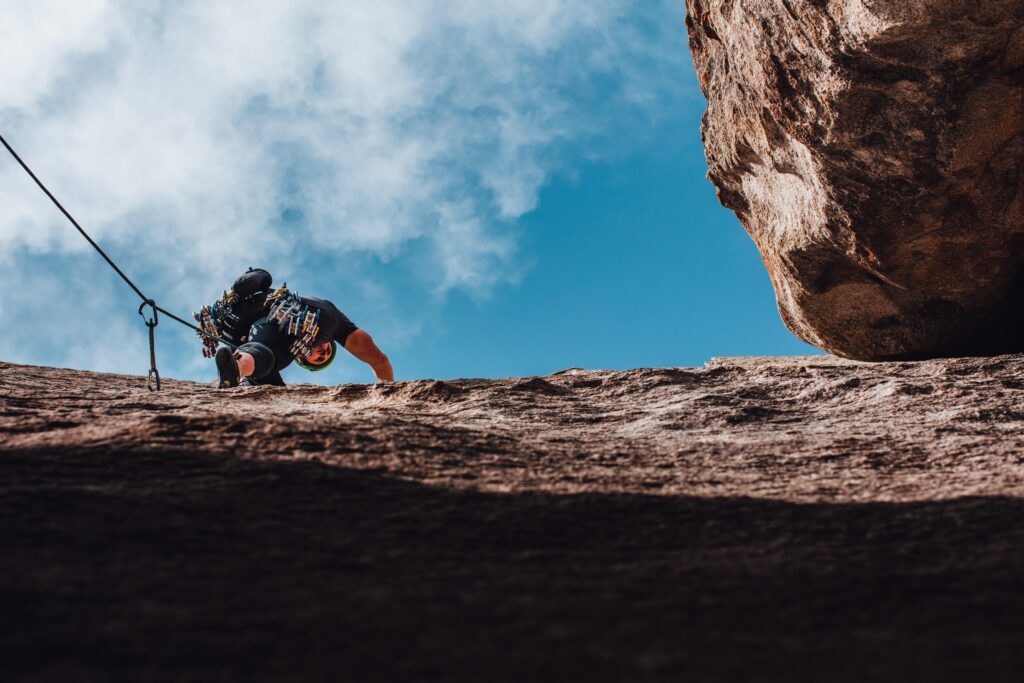Every time a guest lands on your website they’re measuring how much value you provide against the cost of your trip. If you’re the only guiding company that offers that kind of service in your area, then you already have a leg up against other guiding companies who are competing for more guests against multiple guiding companies who offer the same experience as them.
So how do you add more value to your trip offerings? Why should a consumer pick your guiding company over another?
We reviewed “The Elements of Value” by Eric Almquist, John Senior, and Nicolas Bloch. Here’s what it is and how you can apply their Elements Of Value Pyramid to your outdoor guiding company’s offerings.
What Are The Elements Of Value?
Almquist, Senior, and Bloch have three decades of experience conducting consumer research to find out what people want from a brand. They found 30 factors that can provide additional value to your services. They also took the idea of Abraham Maslow’s “hierarchy of needs” and expanded it to a consumer’s hierarchy of needs and perceived value in goods and services.

As you can see, the pyramid is split into four groups: Functional, Emotional, Life-Changing, and Social Impact.
Most “powerful forms of value” are at the top
The reason for the pyramid is that the most “powerful forms of value” are at the top, but you can’t provide those without also providing the basics, or functional value, first. Essentially, the more of these elements a company offers, the higher customers perceive your value, and therefore, it increases customer loyalty and likely, higher profits.
Here’s the catch: you can’t just start offering all of these elements willy nilly.
No company can. In fact, Apple, one of the best performers of their study, only scored 11 out of 30 of the elements. It’s actually difficult to pin down what your customers want on the whole because everyone is different.
Combine the pyramid elements
Almquist, Senior, and Bloch state that there are universal building blocks of value that exist, and combining different elements from the pyramid in unique ways will help you add more value to your customers.
In other words, if you stay true to your values and motivations as a guiding company, you can cherry-pick elements from the pyramid (because not all of these are applicable to you anyway) you can offer your customers that’ll provide them with value and increase your customer loyalty and your profits.
Don’t take what customers say at face value
One of the most important factors the authors state is that they don’t take what customers say at face value.
If a customer tells them that convenience is important to them, well, what does convenience mean for them exactly?
You can see in the functional section that there are plenty of elements that can contribute to convenience like saves time, simplifies, avoids hassles, and integrates. When you start asking your clients what they find valuable in an outdoor guiding service, you need to make sure you dig deeper than surface-level answers.

Functional Value Of Outdoor Guiding Services
There are fourteen functional value components: Saves times, simplifies, makes money, reduces risk, organizes, integrates, connects, reduces effort, avoids hassles, reduces cost, quality, variety, sensory appeal, and informs.
Reduces risk and outdoor adventures
Looking at these components, an interesting element is “reduces risk.” Outdoor adventures are inherently risky and a lot of your clients will sign up with you because they’re risk-takers. At the same time, you want to prove that they can take risks with your guiding company without having to risk their lives. Not everyone aspires to free solo up El Capitan. This is one of those elements that can go both ways for outdoor guiding companies because you want to provide the thrill of adventure, but you also want to protect your guests from physical harm.
Safety first
One way to make “reduces risk” more valuable is to always perform safety checks, replace used or worn gear, and only employ the most qualified guides. In the guiding industry, it’s safe to save that reducing risk is a building block of providing value to your guests, but how can you add more value? What can you do to stand out from your competitors?
Avoid hassles
Another way to add value is to “avoid hassles.” You know what’s a big hassle for adventure-seekers? Hauling their own gear across the state or country. Something you can offer guests are rentals.
Make it easier for your guests to go on the trip with you by renting all the equipment they may need to have an awesome experience.
Not only will rentals help your clients, but you’ll make a profit as well. Further, you can streamline your rentals and trips when you sign up with Origin because we can handle both.
What are other functional elements you can offer to guests to add more value?

Emotional Value Of Outdoor Guiding Services
The pyramid has ten emotional components: Reduces anxiety, rewards me, nostalgia, design/aesthetics, badge value, wellness, therapeutic value, fun/entertainment, attractiveness, and provides access.
While more adventurous trips may not reduce anxiety, it is fun and entertaining. It could even provide therapeutic value because it releases feel-good endorphins afterward. What are ways you can increase the inherent emotional value of outdoor adventures?
Experiencing what they can’t on their own
One of the reasons why so many people book guided backcountry tours is because they wouldn’t be able to experience that closed area otherwise. As an outdoor guiding company, you end up having access to spaces normal people don’t.
You provide them this access.
It’d be in your best interest to find off-the-grid areas you can secure a permit for in order to provide access to your guests that they wouldn’t have otherwise.
It’d be even better if your competitors didn’t have access to an area you did. Imagine being a guest on your guided tour where only your group has access.
FOMO
On top of that, you give others FOMO (Fear Of Missing Out), or what Almquist, Senior, and Bloch call “badge value.” They define this as, “Representing achieved status or aspirations.” You give your guests a higher status when they can say they experienced something that not everyone gets to.

Life-Changing Value Of Outdoor Guiding Services
There are five life-changing components in the pyramid: Provides hope, self-actualization, motivation, heirloom, and affiliation and belonging.
What you can offer
While signing up for an outdoor experience won’t necessarily be a good investment for your guest’s future children (heirloom), it does provide self-actualization, motivation, and probably belonging.
In organized bicycle rides, event directors usually give out finisher medals at the end. It gives riders a sense of accomplishment. It’s something they can bring home and show their family what they were able to do.
Self-actualization
As a guiding company, taking guests up tall mountains and steep cliffs, you help them achieve self-actualization. They see what they’re capable of because of you. This is something that you can definitely use to add more value for your guests. Can you offer a token of accomplishment when they reach the top or end of the trip, especially if it’s challenging? Or bring a professional photographer to document their achievements? Can you include either in the price without charging additional fees?
Affiliation and belonging
Another aspect of life-changing value that outdoor guiding services can easily offer is affiliation and belonging. Once your guests reach the top of the climb or the end of the river, they now share a memory with each other, and with your company.
What are ways you can capitalize on this?
A simple way is to interact with them on social media if/when they tag you. Leave comments on their photos. Follow them to stay connected. Make them feel like an extension of your company.
Social Impact Value Of Outdoor Guiding Services
The last section of the pyramid is at the top: self-transcendence. This means doing something that’s bigger than yourself. The authors use the examples of TOMS, which donate a pair of shoes or dollars every time they make a sale. Their customers know they’re helping more people simply by shopping for themselves.
Protect the environment
You may not have the funds to donate to other organizations at this point, but there are other ways to make the world a better place that doesn’t have to cost you money. As outdoor enthusiasts, most of us want to protect our environment. Is it possible to create a volunteer crew of past guests and current employees to help clean up or build trails in the area?
Loyalty program
You could even start a loyalty program that gives guests a free trip when they’ve volunteered a number of times with your company. The ideas are endless.
Sure, you can offer great customer service, customize emails you send guests on a weekly basis, like using their first name, and offer discounts. But is that what your clients actually want from you? Have you asked them what they find valuable?
It’s not just cost either. You can offer lower prices and still fail to outperform your competitors. So what else can you do to add more value for your customers (that they want)?







